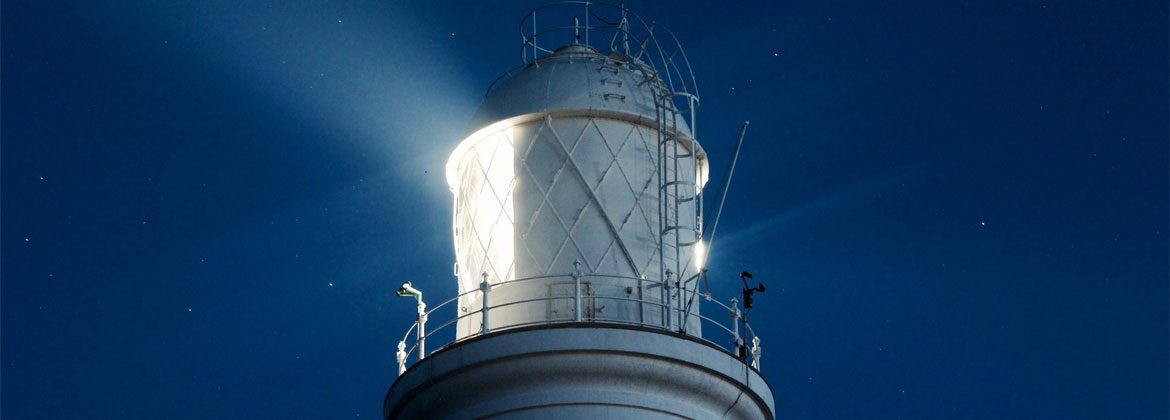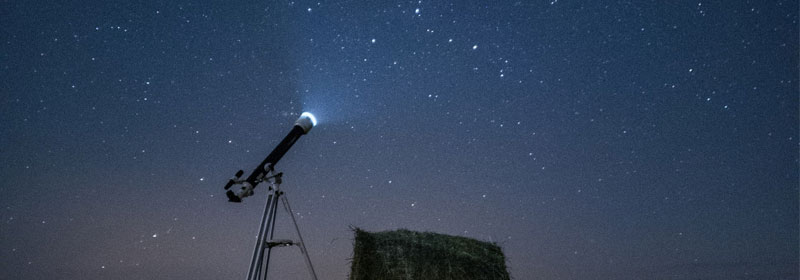Searching for your Star
Searching for your Star


It wasn’t very easy to understand. Eyes acutely observing the sky… One could contemplate an immense sea of colors as the Sun, synonym of life, slowly departed towards the horizon and beyond. But the Sun didn’t depart alone. It also took away the senses and security brought by its light and warmth – always a safe harbor for men. And a new spectacle of confusing sensations would begin, full of doubts, mystery and fears, as the Moon rose bringing along the void of darkness. But darkness did not travel alone either.
The stars – one could see them but never count them. There were so, so many, and still so many more. Points of light which, even though apart, united to face the night. Because of them, it seemed that the night wasn’t so dark. And fear and doubts gave way to a feeling of serenity which led to an unending passion for deciphering and understanding.
The Sun, as an immense, nearby and generous star, which provided, unabashedly, light and life, at the same time indicated, when daily crossing our sky, that there were other sources of light in the universe. All it took was to go away for a brief period of time, giving other stars the opportunity to be seen and attract attention. Giving men the possibility of admiring and comprehending them and the option to follow them, to orbit them. To search for stars.
“When it’s dark enough we can see the stars”.
Charles Austin Beard
The Sun rises.
Rather than wandering, understanding the sky became essential to survival. Men began to observe the movements of the stars in the sky and to associate them with changes in nature here on Earth: seasons, tides, length of days, months, years, using them to organize the sowing and reaping cycles, references for orientation on earth and at sea – and later, in the air and space.
Man discovered within himself a fantastic ability: to predict many of these natural phenomena. Paradoxically, the closer to scientific knowledge, the further they went from the sky.
Throughout many civilizations, man researched and learned a great deal about the universe, apparently by simply observing and admiring the sky. He created tools and developed the ability to predict the movement of the stars, planets, Sun, Moon and even eclipses. He saw things that could only be proven much later with the use of more modern equipment.
With the telescope, man was able to dive even deeper into celestial dynamics, opening to the observer a wider window about the universe and its causes, to the immensely petrifying distance of the grandiosity that he is able to admire.

Man sought to further expand the field of investigation and knowledge about the cosmos by applying technological development to the exploration of space. And man, with the telescope, sailed the sky as fast as the light that reached his eyes, sent travelers that he had built: the space probes.
It seems, however, that throughout this journey and his own journey, man has abandoned that other fantastic ability: the ability to look at the sky and then look inside and discover himself; to look up and down and see the grandiosity of the Whole and of not being a common man; the ability to look from one side to the other and see the other who is near and far.
Yes, there are bodies in the Universe capable of emitting light: stars. They are able to attract other bodies which initially merely reflect their light. However, those who begin by merely reflecting the light of other stars, in time generate their own light. It all begins timidly, but then they shine for all eternity. On their journey, they collect and learn. Their size increases to the point that there is no need to travel so far. All it takes is that each one takes a look inside themselves and see the star they will become.










